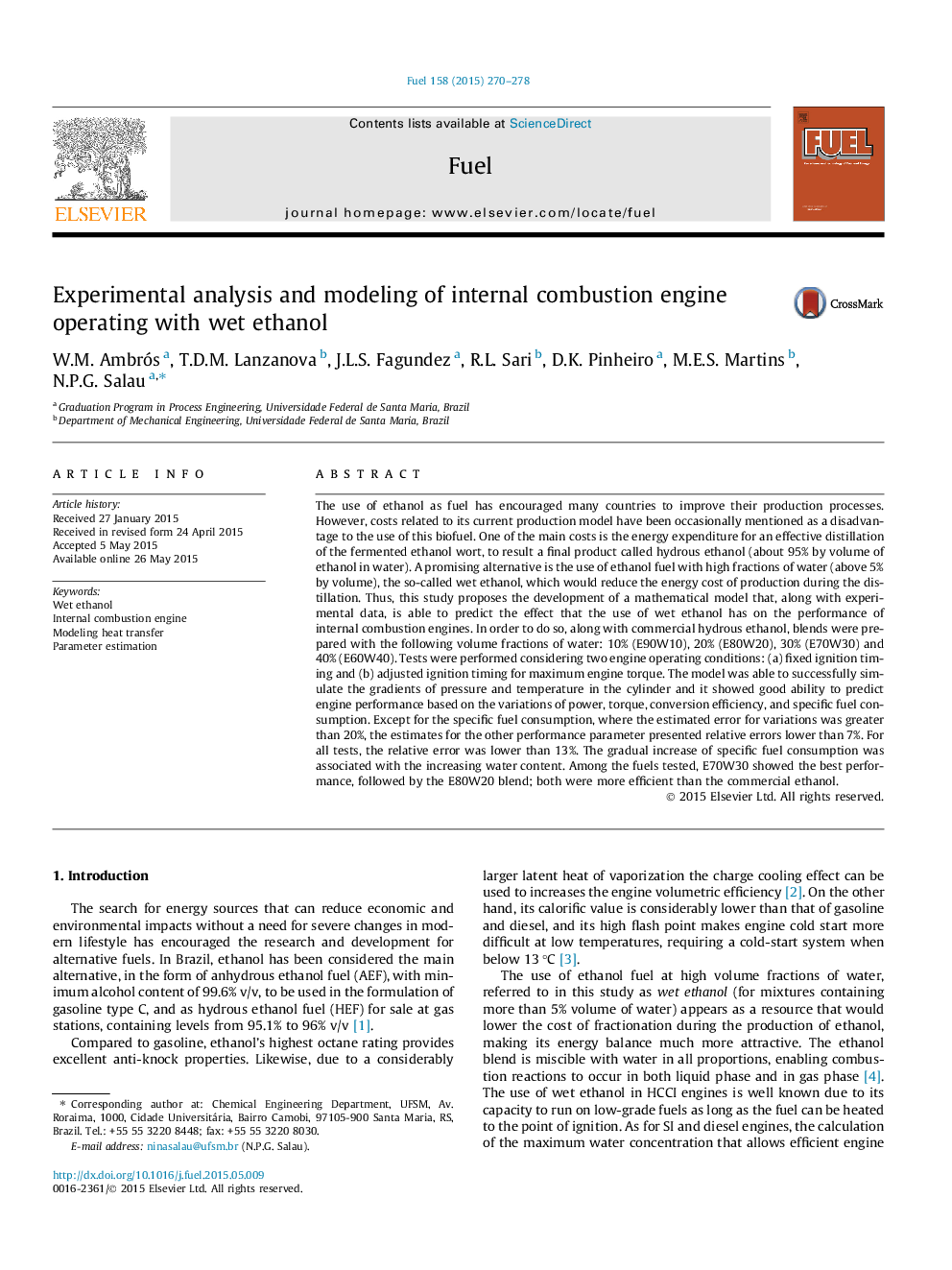| کد مقاله | کد نشریه | سال انتشار | مقاله انگلیسی | نسخه تمام متن |
|---|---|---|---|---|
| 6634950 | 461114 | 2015 | 9 صفحه PDF | دانلود رایگان |
عنوان انگلیسی مقاله ISI
Experimental analysis and modeling of internal combustion engine operating with wet ethanol
ترجمه فارسی عنوان
تجزیه و تحلیل تجربی و مدل سازی موتور احتراق داخلی عامل با اتانول مرطوب
دانلود مقاله + سفارش ترجمه
دانلود مقاله ISI انگلیسی
رایگان برای ایرانیان
کلمات کلیدی
اتانول مرطوب موتور احتراق داخلی، مدلسازی انتقال حرارت، برآورد پارامتر،
موضوعات مرتبط
مهندسی و علوم پایه
مهندسی شیمی
مهندسی شیمی (عمومی)
چکیده انگلیسی
The use of ethanol as fuel has encouraged many countries to improve their production processes. However, costs related to its current production model have been occasionally mentioned as a disadvantage to the use of this biofuel. One of the main costs is the energy expenditure for an effective distillation of the fermented ethanol wort, to result a final product called hydrous ethanol (about 95% by volume of ethanol in water). A promising alternative is the use of ethanol fuel with high fractions of water (above 5% by volume), the so-called wet ethanol, which would reduce the energy cost of production during the distillation. Thus, this study proposes the development of a mathematical model that, along with experimental data, is able to predict the effect that the use of wet ethanol has on the performance of internal combustion engines. In order to do so, along with commercial hydrous ethanol, blends were prepared with the following volume fractions of water: 10% (E90W10), 20% (E80W20), 30% (E70W30) and 40% (E60W40). Tests were performed considering two engine operating conditions: (a) fixed ignition timing and (b) adjusted ignition timing for maximum engine torque. The model was able to successfully simulate the gradients of pressure and temperature in the cylinder and it showed good ability to predict engine performance based on the variations of power, torque, conversion efficiency, and specific fuel consumption. Except for the specific fuel consumption, where the estimated error for variations was greater than 20%, the estimates for the other performance parameter presented relative errors lower than 7%. For all tests, the relative error was lower than 13%. The gradual increase of specific fuel consumption was associated with the increasing water content. Among the fuels tested, E70W30 showed the best performance, followed by the E80W20 blend; both were more efficient than the commercial ethanol.
ناشر
Database: Elsevier - ScienceDirect (ساینس دایرکت)
Journal: Fuel - Volume 158, 15 October 2015, Pages 270-278
Journal: Fuel - Volume 158, 15 October 2015, Pages 270-278
نویسندگان
W.M. Ambrós, T.D.M. Lanzanova, J.L.S. Fagundez, R.L. Sari, D.K. Pinheiro, M.E.S. Martins, N.P.G. Salau,
